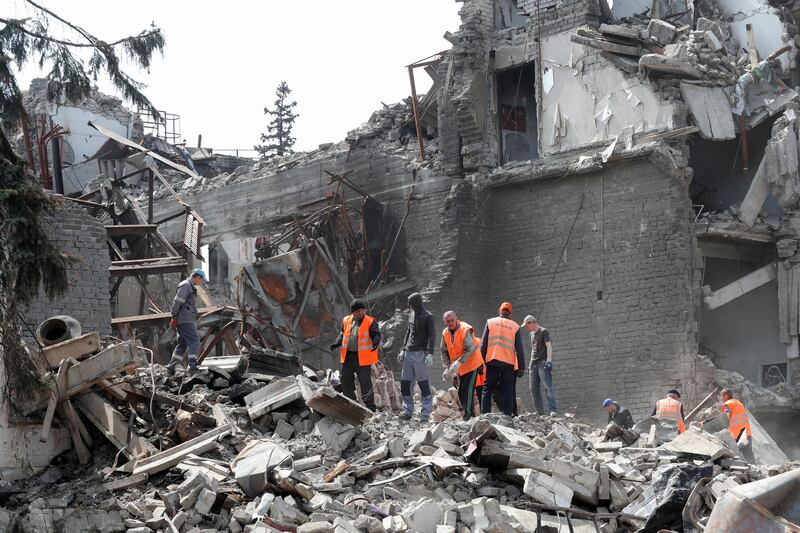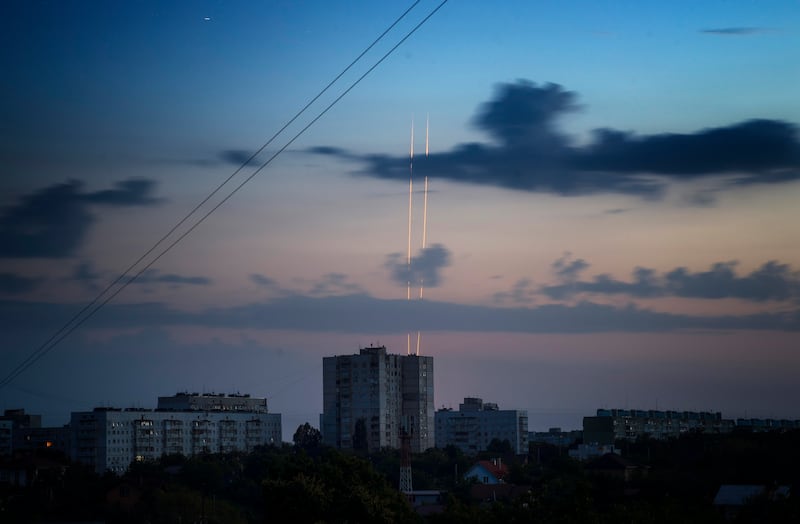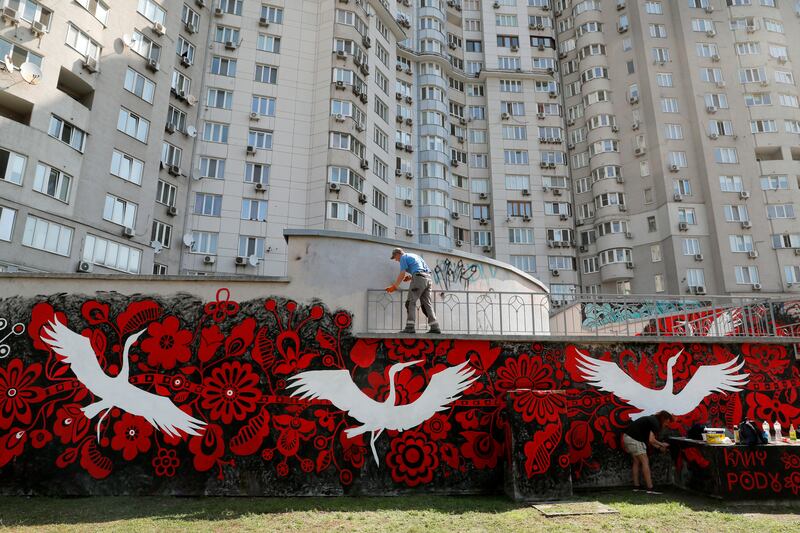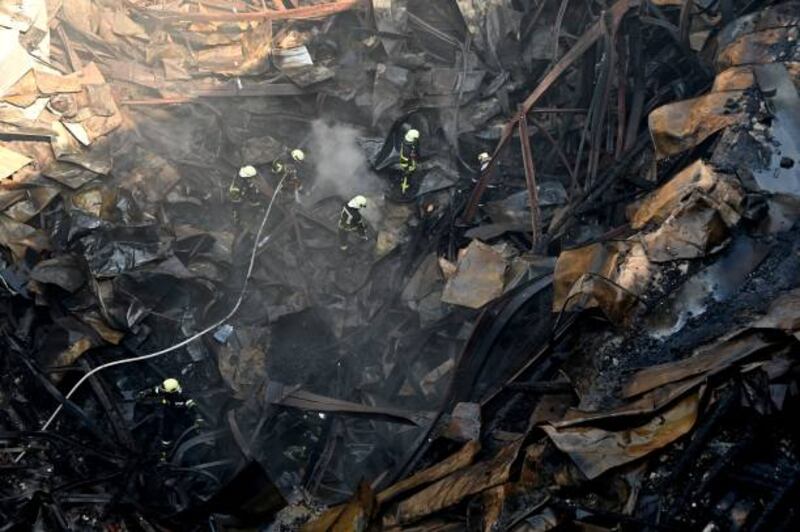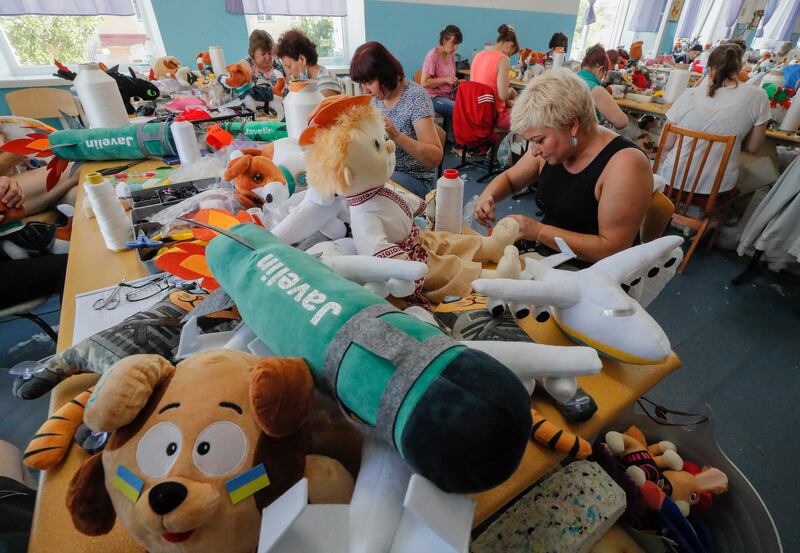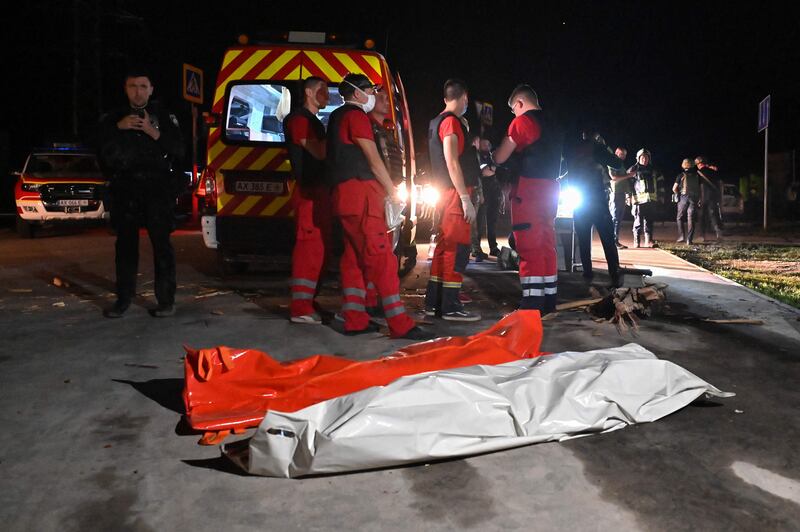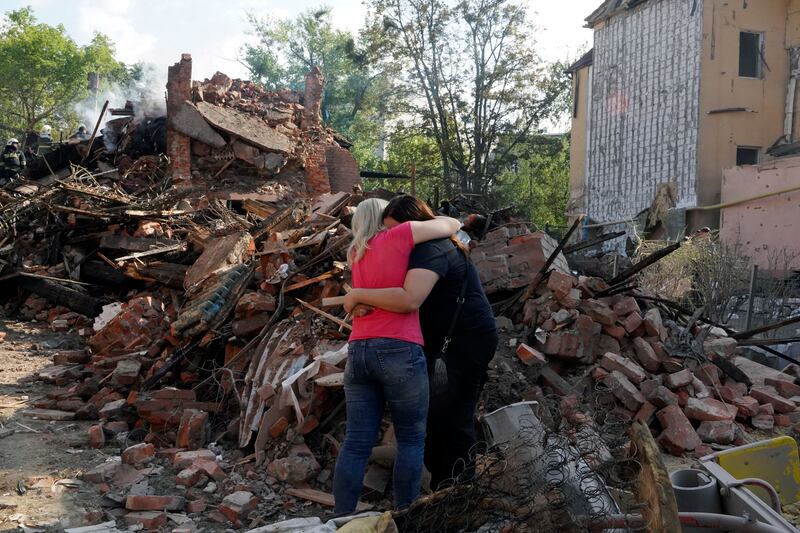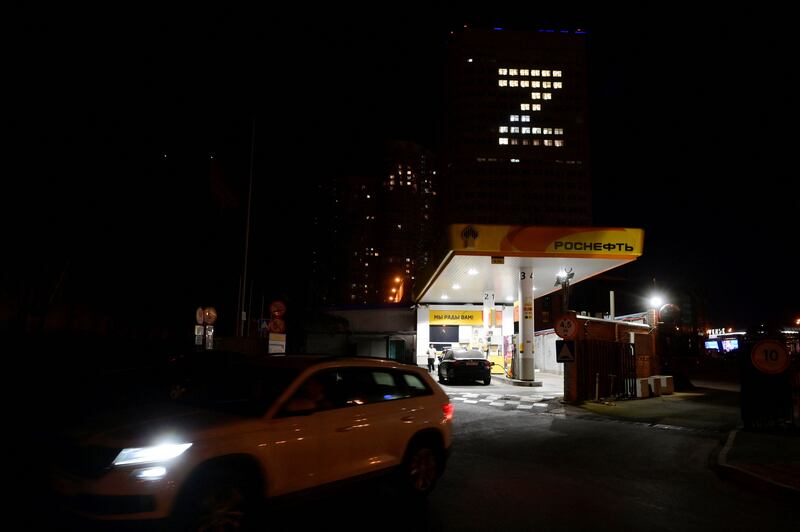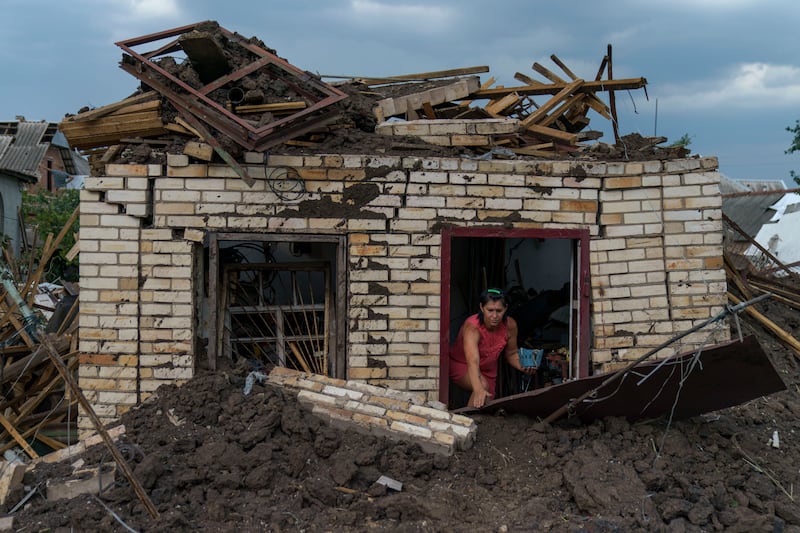After six months of war, Ukraine is playing catch-up to protect its cultural heritage — while other countries are contemplating how they would safeguard their treasures if a similar fate should befall them, The National has been told.
The violence unleashed by Russia’s invasion has damaged 179 cultural sites in Ukraine, including 77 religious sites, 34 historic buildings, 17 monuments and 13 museums, according to the UN’s cultural watchdog Unesco.
The only good news is that none of Ukraine’s seven World Heritage Sites, including Kyiv’s St Sophia Cathedral and a neighbouring cave monastery, appear to have been hit by Russian missiles or artillery.
But not enough was done in peacetime to ensure Ukrainian treasures were kept safe — a familiar mistake, said Professor Peter Stone, a Unesco adviser at Newcastle University and one of the world’s leading experts on protecting heritage.
Once war broke out on February 24, many of the female staff who worked at cultural sites immediately fled the country and some of their male colleagues were called up to fight, making things even more difficult, he said.
“Trying to protect cultural property when a conflict has started, as the Ukrainians will tell you, is nigh-on impossible,” he told The National.
Prof Stone, who advised the British military on cultural heritage before the 2003 invasion of Iraq, now tries to stress this point by training armed forces and governments through an organisation known as the Blue Shield.
Some of its work is confidential but it includes training for countries that fear they too are teetering on the brink of war, amid concerns that the European conflict will widen or that another will break out elsewhere.
“We’ve been working with other countries that now feel decidedly more vulnerable than they did on February 23 this year, in making sure that they are ready at least to some level, for a potential conflict,” he said.
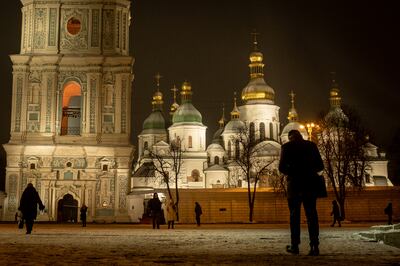
If Ukraine’s preparations were lacking, considerable efforts have been made since the Russian invasion to keep historic items safe.
Some cultural staff took considerable personal risks to rescue their catalogues and send them to a European Union-backed project, which is making 3D digital models of Ukrainian treasures.
There are even efforts to preserve Ukrainian cuisine, with the local recipe for borscht, a vegetable soup common in Eastern Europe, being added to a Unesco list of intangible heritage “in need of urgent safeguarding”.
But some damage has already been done, for example to the theatre in Mariupol, in south-eastern Ukraine, that was bombed in March despite children sheltering inside, in what has been described as a potential Russian war crime.
A British delegate to the Organisation for Security and Co-operation in Europe said in May that destruction of cultural property was “an attack on Ukraine’s very identity”.
The Blue Shield, sometimes described as the cultural equivalent of the Red Cross, has not taken sides in the conflict but urged both Russia and Ukraine to respect a set of international agreements on protecting heritage.
Prof Stone said much had improved in the field since he was asked, in rather haphazard fashion by an acquaintance who lived in the same village, to help the American-led coalition prepare for the invasion of Iraq in 2003.
The coalition had one subcommittee on culture, which never met, he was told, and the thought put into protecting Iraq’s heritage was “being overly kind, negligible,” he said.
Since then, the US and UK have ratified The Hague Convention on protecting cultural property, and Ukraine as recently as 2020 signed up to one of the protocols seeking to close loopholes in the convention.
Ukraine crisis — in pictures
The 1954 convention calls on militaries to protect cultural property in areas they occupy, although it includes a waiver when “military necessity” dictates that heritage must be tampered with.
One example of things working well, Prof Stone said, was after the explosion in Beirut in 2020, when years of collaboration between heritage experts, Lebanon and UN peacekeepers meant officials knew where to turn after the blast.
That allowed for part of Beirut to be cleared and two historic buildings on the verge of collapse to be stabilised.
Nato troops also receive training on protecting cultural property, which is built into the scenarios that troops train for in military exercises.
A key message that Prof Stone and his allies try to put across in such training is that militaries have sound tactical reasons, beyond the goodness of their hearts, to protect cultural heritage.
“Cultural property gives individuals and communities a sense of place, a sense of identity, a sense of belonging. It increases their well-being and it gives them a sense of dignity,” he said.
“So, all of that is positive. If you allow that to be destroyed, that positive cohesion is undermined and makes the population more disjointed and therefore more difficult to — for want of a better term — manage.
“It’s what the military would refer to as a force multiplier. It makes their job easier with very little effort on their part.”
